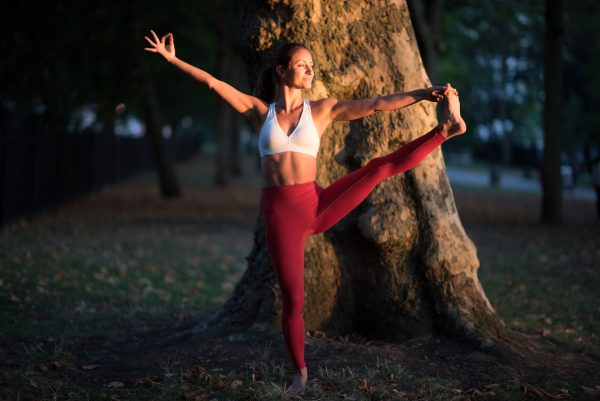Is your yoga practise setting you up for a strong, injury resistant and durable body in the long run?
In traditional yoga we mostly work our passive range of movement, which is a valuable thing to do to increase and maintain our flexibility. But it’s important to know that to keep our bodies functioning in the best possible way we should work our active range of motion too.
What’s the difference passive and active range of motion?
Think about when in yoga you press the elbow into the leg for a twist or hold your foot/leg with the hand… Here you are working your passive range of movement: you are using an external force to hold the body in a position.
Consider the pose below:
Here I am holding my big toe with my hand to keep the leg up (passive range of movement).

If I let go of my foot (active range of movement) will I still be able to hold the leg up in the same position?

As you see, as I let go of the foot the leg lowers a few degrees. I can also assure you the pose became much harder and I couldn’t hold the pose for very long.
Which goes to show, my active range of movement is greater than my passive range of movement in this particular posture.
I have been including some active range of movement work in my yoga classes recently as I truly believe we can all benefit from improving it as well as continuing to cultivate our passive range too.
While gaining passive range of movement is important, the problem with only working on passive range of motion is that it does not allow the nervous system to learn valuable information about that position, such as, how to generate control, strength, and safety in that position. When there is a big gap between active and passive range of motion, we can set ourselves up for an injury.

